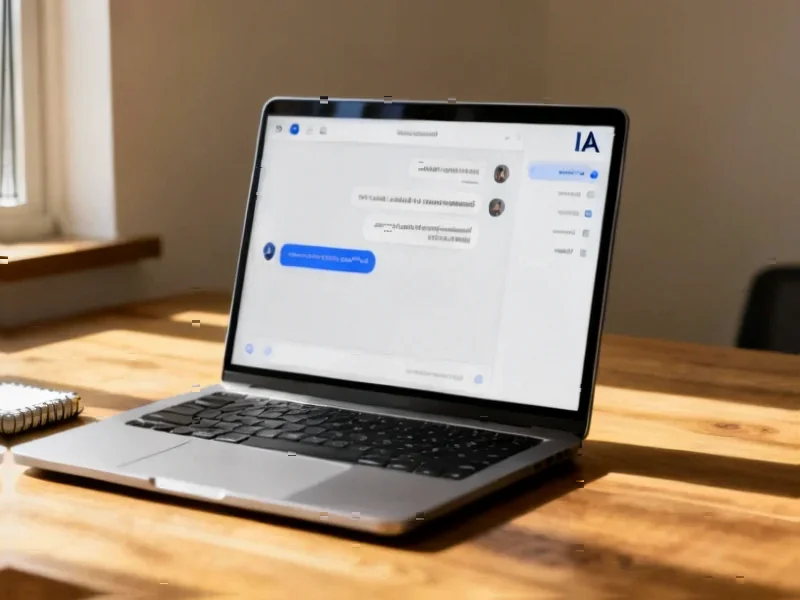According to ZDNet, Perplexity and Getty Images announced a multi-year licensing agreement on Friday that will provide the AI-powered search platform with access to Getty’s extensive library of creative and editorial imagery. The partnership aims to enhance Perplexity’s image generation capabilities while ensuring proper attribution to creators, with the companies stating this will “create a richer visual experience” and “better educate users on how to use licensed imagery legally.” The deal comes amid ongoing copyright litigation in the AI space, including Getty’s 2023 lawsuit against Stability AI alleging unauthorized use of over 12 million proprietary images. This agreement represents a significant shift toward licensed content in an industry that has largely relied on web-scraped training data without proper attribution.
The Licensing Model’s Inherent Contradictions
While this partnership appears progressive, it highlights a fundamental tension in AI development: the conflict between comprehensive training needs and practical licensing constraints. Getty’s library, while extensive, represents a curated subset of visual content that lacks the diversity and scale of web-scraped datasets. AI models trained exclusively on licensed content may develop stylistic biases toward commercial photography and established aesthetic conventions, potentially limiting creative output. More critically, this approach doesn’t solve the underlying technical challenge—AI systems still learn patterns from existing work, raising questions about whether licensing training data sufficiently addresses derivative creation concerns. The partnership announcement emphasizes attribution but doesn’t clarify how the system will prevent style mimicry of unlicensed artists.
Broader Industry Implications Beyond Perplexity
This agreement could create a two-tier AI ecosystem where well-funded companies license content while smaller players continue scraping, potentially widening the quality and legal-compliance gap. We’ve seen similar divisions emerge in other digital content industries, from music streaming to stock photography itself. The real test will be whether this model scales—Getty’s licensing costs could become prohibitive as AI companies require exponentially larger training datasets for each model iteration. Meanwhile, the settlement mentioned in the source material involving Anthropic and authors suggests a piecemeal legal resolution approach that fails to establish clear industry standards. Without comprehensive legislation or cross-industry agreements, we’re likely to see more bilateral deals that protect specific content owners while leaving broader copyright questions unresolved.
Unresolved Technical and Ethical Challenges
The attribution mechanism itself presents significant technical hurdles. Current AI systems struggle with precise source tracking through the training and generation pipeline—determining exactly which licensed images influenced a specific output remains computationally challenging. Even with proper attribution, the fundamental ethical question persists: does crediting creators adequately compensate them for the commercial value AI companies extract from their work? The partnership focuses on legal compliance but doesn’t address whether the licensing terms reflect the transformative commercial potential of AI systems. History shows that technology companies often pursue licensing agreements primarily as liability protection rather than genuine creator empowerment, as seen in early digital music and publishing industries.
Market Adoption Realities
For enterprise customers, this partnership could provide the legal safety net needed for broader AI adoption in commercial workflows. However, it also introduces new cost structures that may limit accessibility. If licensed AI becomes significantly more expensive than open alternatives, we could see continued bifurcation between compliant enterprise tools and consumer-grade systems operating in legal gray areas. The success of this model depends on whether businesses value copyright compliance enough to pay premium prices—a calculation that varies dramatically across industries and regions. Furthermore, the partnership doesn’t address the growing concern about AI-generated content diluting the value of human-created work, potentially creating a circular problem where AI trains on AI-generated content.
Realistic Future Outlook
This agreement represents an important step toward responsible AI development, but it’s unlikely to be the comprehensive solution the industry needs. We’re more likely to see a hybrid approach emerge, combining licensed content with synthetic data and carefully filtered public domain materials. The true test will come when these systems face legal challenges around derivative works and style imitation—areas where current copyright law provides unclear guidance. As AI capabilities advance, the distinction between inspiration and infringement becomes increasingly blurred, suggesting that technical solutions like better attribution tracking must evolve alongside legal frameworks. This partnership moves the conversation forward but leaves many fundamental questions about AI creativity and compensation unanswered.




